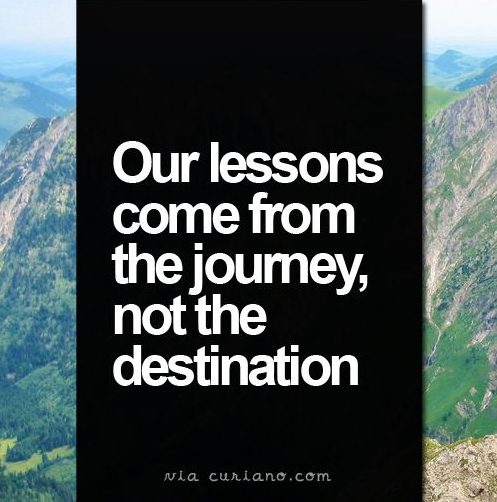Although this is not the first time it has happened, my recent series of posts on Rob Pincus and his Combat Focus Shooting method inspired a higher than normal number of off the record comments to me. These generally concerned why he actually is a douche and why I should not endorse or promote him or his CFS method.
Regarding the former, as I said in my earlier post, I do like Rob Pincus; perhaps that is because I share some of his same “professiorial” (blowhard, know-it-all) qualities. But the bigger point I was after had to do with the question of civility and how people manage differences within gun culture. If Pincus contributes to the incivility, he as guilty as his critics. I think that goes without saying, but in case it doesn’t, I just said it.
Here I am more concerned with addressing the latter issue raised: Why I should not endorse or promote Pincus or CFS.
After writing but before posting my experiences of actually learning the CFS method, I had received enough feedback like this that I added disclaimers to two posts to the effect that I am not a “subject matter expert” in guns or firearms training, and that I cannot speak to whether any shooting or teaching method is superior to others.
By writing about things, I am not ENDORSING them. If by writing about them I am in some way PROMOTING them, I cannot help that; I want to write about the aspects of Gun Culture 2.0 that appear important to me.
My point in these posts, and the point of my entire project studying Gun Culture 2.0, is to try to understand what is going on. A quote from philosopher Baruch Spinoza appears in the right column of every page on my blog:
“I have sedulously endeavored not to laugh at human actions, nor to lament them, nor to detest them, but to understand them.”
And understanding, like the good life and so many other things, is a process not a destination.
My approach to the process of understanding gun culture is very much like my approach to reading a long, complex, serious book. In what follows I share some of what I teach my students about how to read a book, and draw parallels to how I am (in the process of) reading gun culture.
How to Read Culture Like a Book
When reading long, complex, serious books, you will never feel after a single reading that you have command of everything you read. This is to be expected. After four or five readings, you may still feel that there are parts you missed or don’t understand. This sense of incompleteness is part of the experience of reading, at least the experience of reading serious work.
When I immerse myself in gun culture, there are times when I feel like I am coming to understand something about it, but those moments are fleeting and I recognize aspects of it that require further study. One of the nice things about sharing interim thoughts on this blog is that I get feedback from people who have different or greater understandings than I do. This helps me see what I am missing.
Reading, like research, is an active endeavor. What David Bartholomae and Anthony Petrosky call “strong readers” approach this endeavor by moving back and forth between two modes: reading with and reading against the grain of a text.
Reading With: Anyone who reads much can read with the grain of a text. In this mode, you find information in a text, identify the main ideas, summarize or reproduce an author’s argument, locate an author’s purpose for writing the text, identify the author’s intellectual progenitors and sparring partners. In reading with the grain of the text, you attempt to understand authors on their own terms.
Reading Against: Strong readers go beyond reading with the text and remake what they have read to serve their own ends. They do this by putting things together, figuring out how ideas and examples relate, explaining as best they can material that is difficult or problematic, translating the author’s key phrases into their own terms. In this mode, the author doesn’t so much speak to the reader as for the reader. The strong reader brings to the text a particular agenda or schedule of questions which the author is then forced to answer.
In the process of writing a book about Gun Culture 2.0, I move back and forth between reading with what I am observing and reading against it. Much of what I write on this blog is akin to the first moment in the process of reading: attempting to understand authors on their own terms. The book itself, by contrast, will be much more about forcing the authors to answer my questions.
It is important to pursue understanding (of books or gun culture) in the right order. Reading with the grain of the text is a prerequisite of reading against it. As Mortimer Adler notes in his famous work on liberal education, How to Read a Book:
“do not begin criticism until you have completed analysis and interpretation (do not say you agree, disagree, or suspend judgment, until you can say, ‘I understand’).”
With respect to gun culture, I cannot yet say “I understand.” I am in the process of understanding and I welcome all those who have joined me on and are contributing to this journey.




Nicely done and sounding even more professorial than usual.
LikeLiked by 1 person
Only from you, I will not take that as a slur.
LikeLiked by 2 people
So when a gun guy sounds professorial or vice versa, who is culturally-appropriating whom?
(duck and cover….)
LikeLike
No need to duck and cover. You and I are the only ones who care!
LikeLiked by 1 person
I don’t think you and Khal are the ONLY ones who care, Professor! 🙂
LikeLiked by 2 people
Even the great composers of classical music, went through reams of paper and quarts of ink, before everything came together, perfectly.
It takes time. You’re doing it right.
LikeLiked by 3 people
“How to Read a Book” was on a recommended reading list in an appendix to one of my first books. Your article is a reminder, and further evidence, that most of my detractors haven’t even bothered to figure out what they are complaining about.
I must admit that I have been in Europe for most of the last 5+ weeks and was unaware that this drama had been unfolding on your blog. I am going to get caught up while on Trains over the next few days. No doubt, there will be some great pieces of insight to share with the CFS Instructor Team and the world at large. You seem to have stumbled into a particularly insidious group of people who not only don’t like the success of the CFS Program or me personally for whatever reason, but also resent being called out on their own hypocrisy have the pitfalls in their arguments pointed out. There was a time when I probably gave back much more of what I got in regard to barbs and uninformed attacks.. for the most part, I got informed and realized that most of the detractors are so far from a position of educated criticism that they can’t be taken seriously (…and aren’t outside of their own cliques). Some people who actually show up on my own social media threads with criticism give me a chance to address misunderstands and deliberate attempts at misinformation, which I appreciate. It is true, however, that I’ve gotten much faster with the ban/block/delete response when someone repeatedly shows up with the same crazy-talk. Some of my favorites are:
“You don’t carry a gun illegally, so you aren’t a real patriot/American/free man/gun owner/instructor.”
“You sell instructor certifications to anyone willing to pay.”
“Your courses just make everyone feel like a winner because you don’t use timers.”
I’m looking forward to getting caught up.
Thanks for your professionalism, David!
LikeLiked by 2 people
Professor ditto both Khal and Brittus. Civility comes through in everything you write sir. My sincere hope is my finances allow me to get your book when it is done.
LikeLiked by 1 person
Reblogged this on Windage and Elucidation and commented:
What we used to teach when we used to teach about learning.
LikeLiked by 1 person
Yo Matthew
You argue that since gun ownership is a fundamental right, it isn’t subject to a cost benefit analysis. My question for you is(since you have a background in philosophy), how do you justify this, and what is your take on this article. http://philosophy.wisc.edu/hunt/GUNCONT2.htm
LikeLike
Btw Matthew
I saw you getting into with someone on Twitter over AR-15s. Might I suggest you respond to him by asking if he values his ability to travel somewhere a bit faster over the thirty thousand lives taken due to the proliferation of automobiles. After all, he could just ride a bike and significantly lower the risks to himself and other people, and get more exercise. He is therefore complicit in not just car deaths, but many of the preventable diseases that would be gone if we just rode bikes everywhere instead of cars. Of course this thinking is absurd. The vast majority who drive cars are safe, just as the vast majority of gun owners follow the rules of gun safety, are also perfectly safe. Given the rampant texting though I’d reckon gun owners are more safe.
LikeLike
A know it all blowhard is the last thing I would think of you after reading this boy for a little while David.
LikeLike
Reading this boy? I just now noticed that type. Reading this blog…
LikeLike
[…] On Reading Gun Culture […]
LikeLike